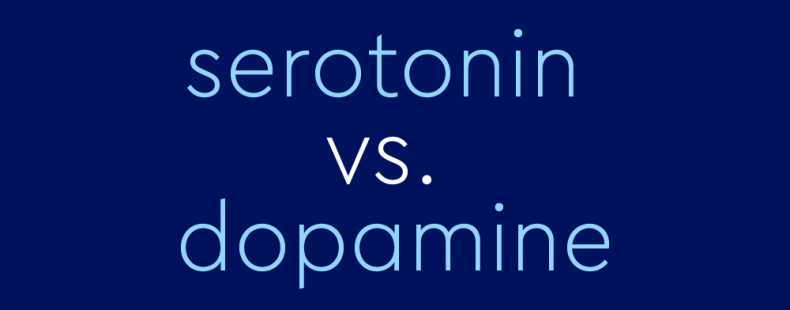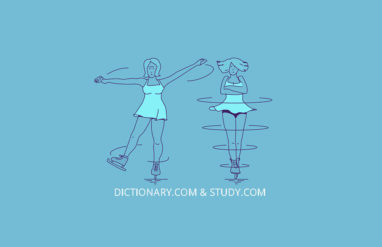Bright and breezy? You’ve got serotonin to thank. Gloomy and grumpy? A big ol’ hug and a burst of oxytocin will perk you up.
As it turns out, there’s a chemical side to happiness and positive mental health.
Lifestyle factors and genetics certainly play a role in this—the latter accounting for 50 percent of your high spirits, research says. Still, how happy you are is dictated by a quartet of fluctuating hormones and neurotransmitters. Well, for the most part.
Ebbing and flowing throughout the day in response to inner and outer cues, they evolved and are designed to boost your moods while fostering your general well-being.
In fact, at a core level, their purpose is to keep you alive. How? By alerting you to important information and, simply put, directing you away from pain and toward pleasure. (Joy is a matter of survival. Apparently.)
So, what brain chemicals spark your bliss?
Meet the family: dopamine, oxytocin, serotonin, and endorphins
Sometimes referred to as D.O.S.E. and involved in several bodily functions, these chemicals promote a sense of closeness, cheerfulness, self-esteem, and even love, making us bond emotionally and trust each other.
Let’s give them a closer look.
What is dopamine?
Known by many names—the “feel-good” hormone, the habit-former, or the motivational molecule—dopamine is perhaps the most well-known chemical in the human body.
The word dopamine, first recorded in the 1950s, is a blend of dopa (an amino acid it is formed from) and amine (an organic compound derived from ammonia).
From motor control to cognitive functions, dopamine’s got its finger in many pies. It rose to fame for being a key player in the brain’s pleasure and reward system, a series of processes that drives your motivation, desire, and cravings. It spikes up when you either get a reward or as you strive to achieve it. That is, dopamine is what keeps you going when the going gets tough.
But there’s a downside to it: its highly addictive nature. You guessed it. Dopamine is what keeps you coming back for more. In charge of your gratification-seeking compass, it points you to any activities and behaviors that can get you in the zone. Over and over again. And high dopamine levels are far from desirable when overeating, gambling, drinking, or taking drugs happen to be on the list.
What is oxytocin?
Ever notice that huggers tend to be happy people? It’s the oxytocin buzz.
The word oxytocin, which first appeared in the 1920s, has its roots in the Greek oxutokia, meaning “sudden delivery.” It combines oxýs (“sharp”) and tókos (“childbirth”). Not a coincidence.
In fact, oxytocin’s primary function is to kick-start labor by stimulating contractions. It’s also released in abundance throughout the whole pregnancy and after delivery to help new mums with breastfeeding and child-bonding.
Triggered by closeness and touch, oxytocin is Mother Nature’s ultimate bonding agent. If humans are social animals, oxytocin is probably one of the main reasons why. It’s thought to bring about feelings of intimacy, belonging, and trust. It increases empathy and deep emotional connection, enabling us to build meaningful and loving relationships.
But that’s not all. “The love hormone” (as it’s popularly known) improves immunity and calms the nervous system, regulating stress responses. And, according to the latest research, it could even stimulate wound healing and muscle health. A hug may go a long way!
What is serotonin?
Serotonin either makes you agreeable and friendly or cranky and unpleasant to be around if you have low levels of serotonin.
The term serotonin was coined in 1945–50 from the Latin serum, meaning “watery fluid,” and the Greek tonikos meaning, in its broadest sense, “an invigorating medicine.”
Mostly made in the gut (a.k.a. your second brain) serotonin is produced from the essential amino acid tryptophan that, not being synthesized by the body, must be supplied through the diet. Apart from aiding in memory and learning abilities, digestion and metabolism, appetite, and sleep-wake cycles, serotonin is widely known as a powerful antidepressant and a mood regulator.
Similar to oxytocin, but in a slightly different way, serotonin is a social chemical. It makes you feel good about yourself, stirring up confidence and self-esteem, and nurturing a sense of common bond that stems from status, respect, and loyalty. As you would expect, low serotonin won’t make you feel good at all.
So, don’t let serotonin levels dip too low.
What are endorphins?
Ever heard of the “runner’s high”? That’s caused by a big rush of endorphins.
Endorphins derive their name from two other words squished together: endogenous, which means “derived from within,” and morphine, an addictive pain reliever and sedative.
So, an endorphin is essentially morphine produced inside your body. Set off by physical pain, stress, or discomfort, endorphins are the body’s natural painkillers. They mask the pain signals, flooding you with euphoria and allowing you to power through. Sounds familiar? Good guess. They sure get on well with dopamine, creating that potent combo that gets you hooked on running.
By the way, no worries if running is not your thing. You can still get your shot of endorphins! Deep belly laughs—the kind that engages your core like you’re doing sit-ups—will do the trick too.
Which chemical messengers are which?
Despite being four different chemicals and having distinct functions, oftentimes the lines between dopamine, oxytocin, serotonin, and endorphins become blurred. And that’s normal.
Why is that? Deeply intertwined, they work as a team, interacting with and affecting each other to maintain a careful balance within the body.
Dopamine and serotonin frequently get confused with each other. You may think it’s dopamine rushing through your veins, but rather it is serotonin you are merrily bathing in. (Not a big issue. They both make you happy.)
Yet, there’s a key difference between the two: if dopamine needs a reward to kick in—or the promise of it—serotonin does not. When it comes to the “mood regulator,” slow and steady wins the race.
Dopamine can certainly be mistaken for endorphins. The two of them flawlessly blend together in the popular “runner’s high.” They are both intended to keep you going. But while the latter aims to relieve physical pain, the former jumps in at the sight of the finish line, or long before, at the mere thought of celebrations, reviving showers, and scrumptious meals.
As a social chemical, serotonin could be mixed up with oxytocin, the “love hormone.” Although they both strengthen the human bond, the first is linked with status and pride, the second has more to do with empathy and deep emotional connection.
And when do you use them?
Here are a few rules of thumb to help you navigate the maze.
Is there a prize in sight? Dopamine is on duty.
You’ll have a rush of dopamine release when you get an A+ or someone likes your post on Instagram, when you tick a checkbox on your ever-growing to-do list or score a goal, or when you’re closer to hitting that target. It’s your brain’s way to tell you you’ve done a good job. You deserve a pat on the back. Time to reward yourself.
Love is in the air? Oxytocin is to thank.
You spend time with someone you are attracted to or you care about, you hug or kiss a loved one (even a pet will do!), you cuddle a newborn baby, you hold your significant other’s hand, or you gaze into each other’s eyes. Warm fuzzies will soon fill you up, and presto, the “love hormone” will make you feel butterflies in your stomach.
Feeling cheery and good about yourself? Serotonin is at work.
Your hard work at school or in the office is being acknowledged and appreciated. You completed the assignment, you accomplished the task. You did well. People praise you, giving you genuine compliments. You glow with confidence and a deep sense of recognition. Life is good.
Wait, is the pain gone? You are on an endorphin high.
Whether you are running a marathon, sweating on a bike, or taking a freezing cold shower in the morning, if you can stand a minute or two—or more—of discomfort, rest assured endorphins will surely come to the rescue.
So, keep those chemicals flowing. Get your daily D.O.S.E and live happily ever after. You are physically and chemically geared toward it. Nature is on your side.
Continue the conversation on living a wholesome life with our article on the difference between nutritional and healthy.














